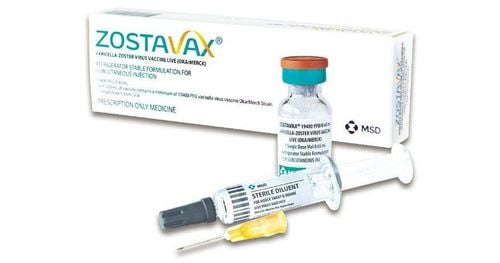This is an automatically translated article.
The article was professionally consulted by Doctor Le Thu Phuong - Department of Pediatrics - Neonatology - Vinmec Ha Long International General HospitalChickenpox is a very common disease in children. This is a benign disease, which can go away on its own after 7-10 days, but can also cause sepsis, pneumonia, encephalitis... or leave sequelae later on.
1. Symptoms of Chickenpox Chickenpox, caused by the Varicella zoster virus, is most common in the spring, but can occur year-round. The disease will appear 10-14 days after contact with the source of the disease, often with sudden onset of symptoms:
Blisters: Blisters with a diameter of 1 - 3 mm, containing clear fluid, appear very quickly, in within 12-24 hours can float the whole body. An infected person may have only a few pimples, but can also have more than 500 spots all over the body. However, in severe cases, the blisters will be larger; or when infected with more bacteria, the blisters will be cloudy because they contain pus. Fever, headache, muscle pain Anorexia, vomiting Sensation of itching at the site of blisters If there are no complications, the disease will last from 7-10 days. The acne spots will gradually dry, scab, darken the skin where the blisters appear. In the case of further bacterial infection, the blisters can leave a scar.
2. How is chickenpox spread? Droplets (nose, saliva, etc.) through the air or by touching the rash of a person with chickenpox Contact with clothing or bed linen contaminated with fluid from the rash or from the mouth or nose of the person with chickenpox sick person In a person with chickenpox, the disease can be contagious for 1-2 days before the rash appears until all blisters have crusted over. About 90% of people who have never had chickenpox will get it if they come into contact with an infected person.

(Ảnh minh họa)
How to vaccinate at different ages, specifically:
Children from 12-18 months old: 1 injection. Children 19 months to 13 years of age who have never had chickenpox: 1 shot. Children over 13 years old and adults who have never had chickenpox: 2 doses, 4-8 weeks apart.














